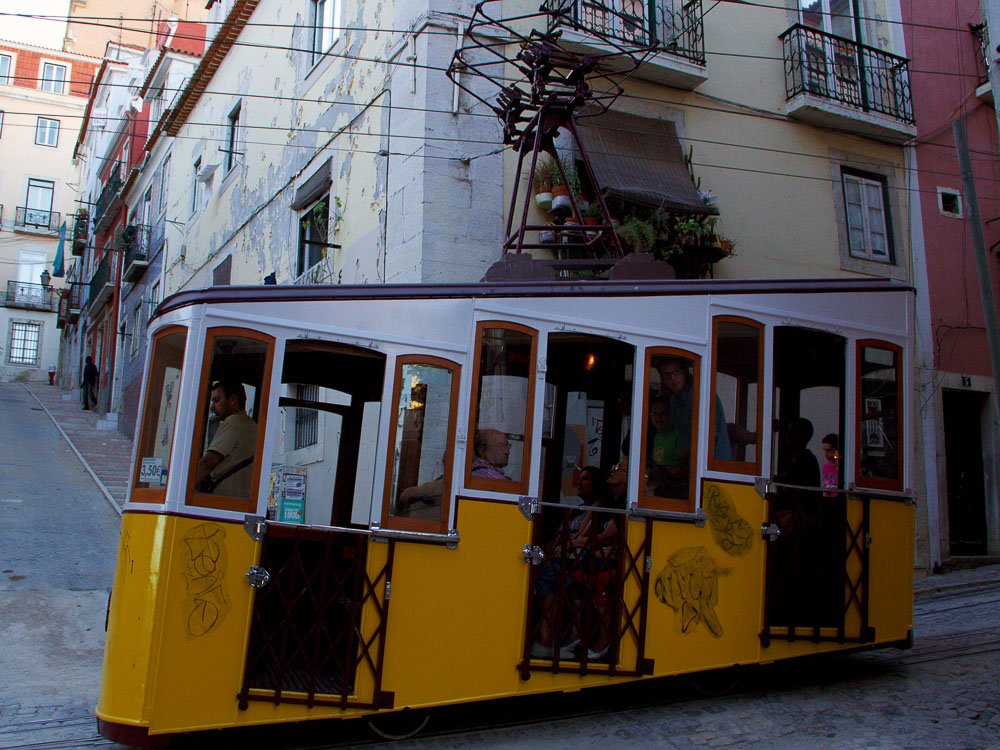Situated in central Lisbon, the Elevador da Bica is a remarkable example of industrial-era engineering and an essential part of the city’s transport system. Also known as Ascensor da Bica, this funicular offers not only a practical way to travel but also breathtaking views over the Tagus River.
And let’s not forget about the most appealing characteristic of the Elevador da Bica: its design. With its yellow carriages with wood paneling and brass controls that reflect its historical era, I’d say it’s probably one of the most iconic sights in Lisbon!
As I’m sure you don’t want to miss out on this attraction, join me as I guide you through the funicular’s story and tell you how to get the most out of your journey. Hope you have a good ride!
Index
1. History of Elevador da Bica

The Elevador da Bica, inaugurated on June 28, 1892, is still a vital part of the city’s public transport network, serving both residents and visitors.
As the city’s third funicular, it was designed by Raoul Mesnier du Ponsard, a student of the famed Gustave Eiffel. Originally powered by water, the system used reservoirs to move the carriages up and down the steep hill.
In 1896, technological advancements led to its conversion from water to steam power, boosting its efficiency and reliability. Further improvements came in 1924 with electrification, aligning with Lisbon’s broader electrification efforts and enhancing both operational efficiency and passenger comfort.
Today, known as Ascensor da Bica, it connects Rua de São Paulo with Rua do Loreto through the Bairro da Bica neighborhood. Each carriage accommodates up to 23 passengers, offering not only a practical transit solution but also a glimpse into traditional Lisbon lifestyle.
2. Planning your visit to Elevador da BicA
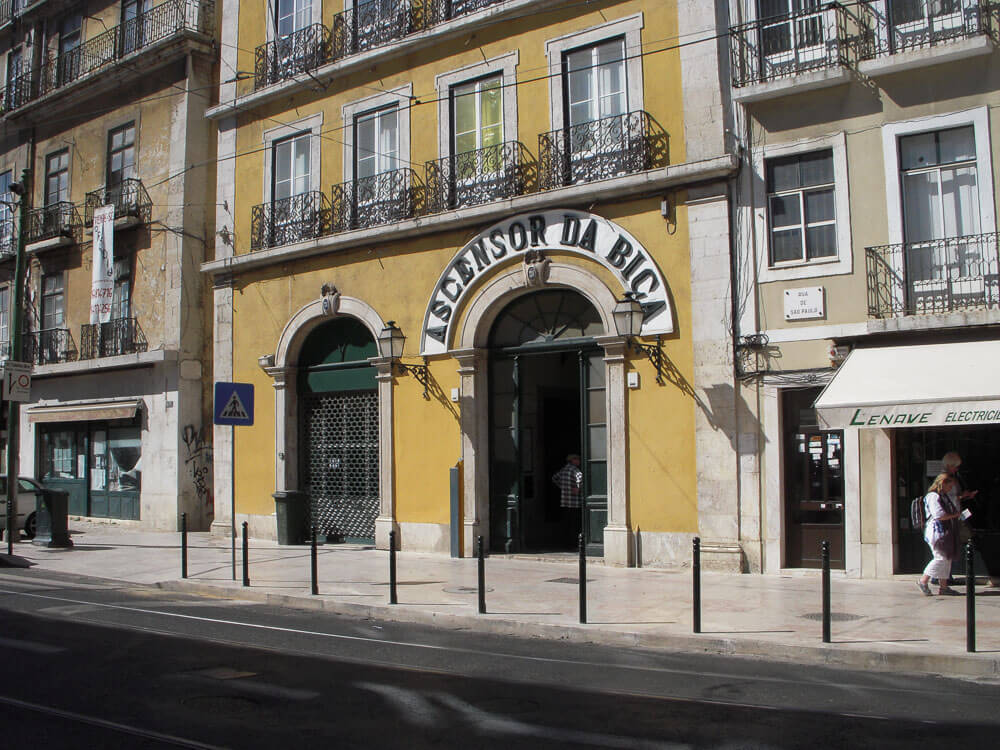
The iconic yellow funicular, known as the Ascensor da Bica, connects the Cais do Sodré district with the Bairro Alto neighborhood. Valued for its efficiency and picturesque route, it provides both practical transportation and a unique city experience.
Here’s everything you need to know when planning your visit:
2.1. How to get there?
Getting to the Elevador da Bica, or Ascensor da Bica, is pretty straightforward. The 19th-century funicular climbs one of Lisbon’s steepest hills, starting from Rua de São Paulo and reaching Largo do Calhariz via Rua da Bica de Duarte Belo.
If you’re starting your journey at Cais do Sodré, reaching the funicular can be done by a short walk or a quick ride on public transportation, as tram 25E and buses 714 or 744 stop near the funicular’s base station.
While walking offers unplanned discoveries, trams and buses ensure a more efficient travel along main routes. Either way, these methods provide ease and an opportunity to experience various aspects of Lisbon life, from markets to historic and cultural sites.
2.2. How to get tickets?
The Ascensor da Bica, known as route 53E within Lisbon’s public transport system operated by Carris, is a charming way to navigate the city.
Tickets for the Bica Funicular are available onboard for € 3.80, covering two trips in the same day. Note that there are no single-trip tickets, and only cash payments are accepted.
If you plan on using Lisbon’s public transportation extensively, I recommend buying a 24-hour ticket for € 6.80. This ticket provides unlimited access to the Bica Funicular, all other funiculars, trams (including the famous tram 28), metro lines, and buses across Lisbon.
It’s the most economical option for visitors planning to visit multiple sites in one day!
2.3. Opening hours and best time to visit
The Ascensor da Bica operates from 7am to 9pm from Monday to Saturday, and from 9am to 9pm on Sundays and public holidays. This schedule suits both morning and evening visitors, providing many opportunities throughout the day to enjoy this unique experience.
Its location near the busy Bairro Alto neighborhood means that the lines for the Ascensor da Bica can be long, particularly around noon when there are more tourists. To experience a less crowded ride on the Bica Elevator, I recommend visiting early in the morning or after 4pm.
If you happen to be put off by long waits or are seeking a quieter trip through Lisbon’s landscape, there is an alternative: the Elevador do Lavra. It’s not as busy but shares similar historical significance and appeal, ideal for a more peaceful journey away from much of the tourist activity.
3. Nearby Attractions Guide
Close to the Ascensor da Bica, there are lots of attractions worth visiting. One of them is the Pharmacy Museum (Museu da Farmácia), which provides a look into the history of health and pharmacy worldwide. It features a collection that spans centuries, offering insights into how medicine and treatments have evolved.
A short walk from Bica leads to the Santa Catarina Viewpoint (Miradouro de Santa Catarina). This spot offers city views and is ideal for watching sunsets or enjoying a coffee while looking out over Lisbon’s rooftops and the Tagus River.
Another key stop is Ribeira Market (Mercado da Ribeira), perfect for a well-deserved dinner after a day of sightseeing. Close to Chiado, this active market combines traditional vendors with a modern gastronomic area managed by Time Out Market Lisboa.
Chiado itself is also a must-visit neighborhood, as it offers a unique blend of historical and modern attractions. It’s home to iconic cafes like A Brasileira, which is famously associated with the celebrated poet Fernando Pessoa, and beautifully restored 18th-century buildings, theaters, and museums.
4. Other Lisbon funiculars
4.1. Lavra Funicular
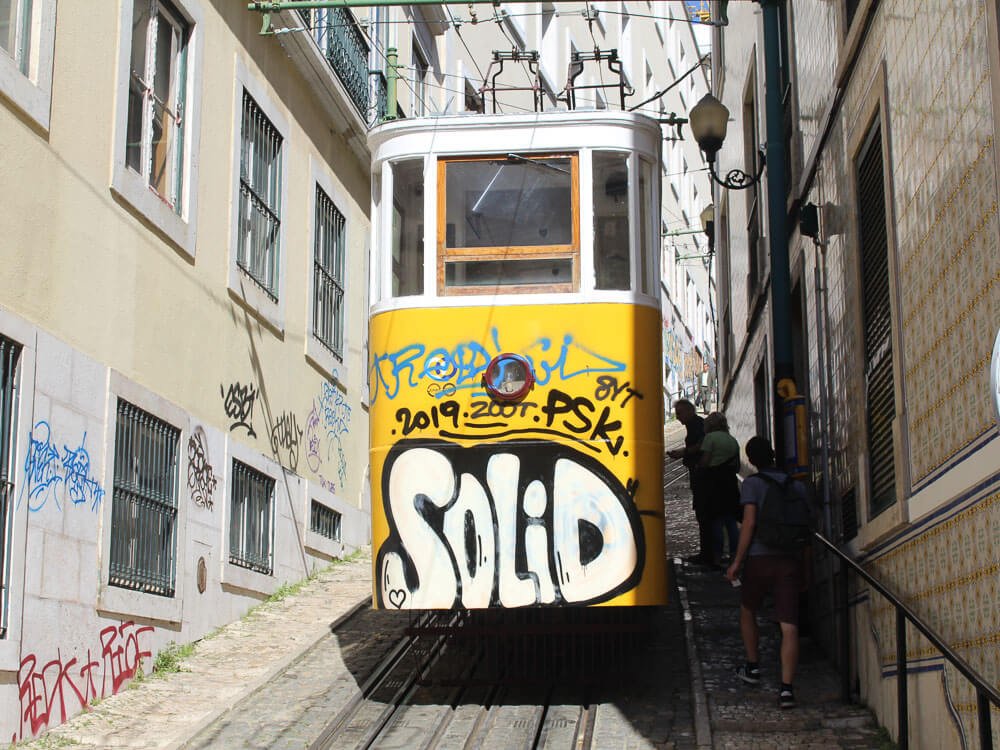
The Ascensor do Lavra, established in 1884, is Lisbon’s oldest funicular. Unlike the busier Bica or Gloria funiculars, Lavra offers a quieter experience, perfect for those seeking a more serene way to explore Lisbon’s topography.
This historic funicular ascends one of the city’s steepest inclines in a short but steep journey. At the top, you’ll find Jardim do Torel in the Santo António neighborhood. This peaceful garden provides a welcome escape from the busy streets, offering panoramic views over the city and plenty of seating areas for relaxation.
Visitors to Jardim do Torel can explore the surrounding area, enjoying streets lined with traditional architecture and charming cafes that capture the essence of local life. It’s the perfect place for those who prefer to avoid crowded tourist spots while still being close to a variety of attractions.
4.2. Gloria Funicular
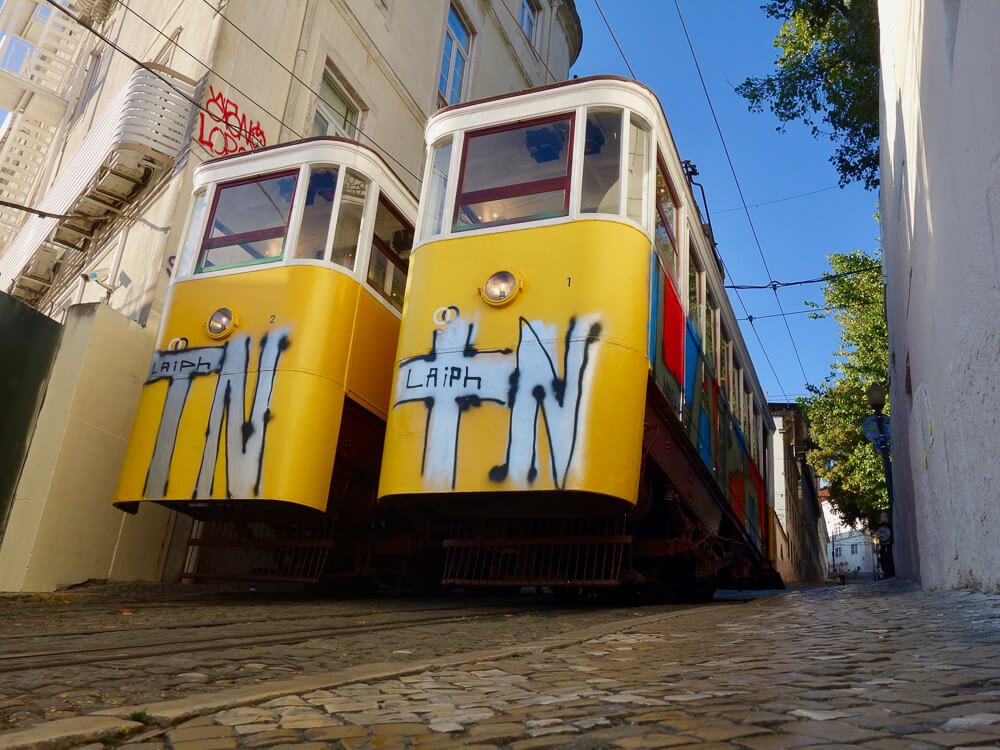
The Ascensor da Glória, established in 1885, serves as a crucial link between Praça dos Restauradores and the Bairro Alto neighborhood. As Lisbon’s second funicular, following the Ascensor do Lavra, it’s part of a network designed to navigate the city’s steep hills.
Originally powered by water counterweights, the Ascensor da Glória showcased early funicular technology, utilizing gravitational forces for movement.
However, with advancements in technology and increasing demands for more efficient public transport, the funicular underwent significant modernization. In 1915, it transitioned to electrical power, enhancing its operational capacity and reducing its environmental impact.
Today, the Gloria Funicular remains a popular choice for both locals and tourists, offering a practical means of travel along with stunning views. While other funiculars are known for their unique perspectives of Lisbon’s cityscape, the Glória stands out for its historical significance and its role in connecting two major areas of the city. It’s definitely worth visiting!
Bica funicular: a charming way to see Lisbon
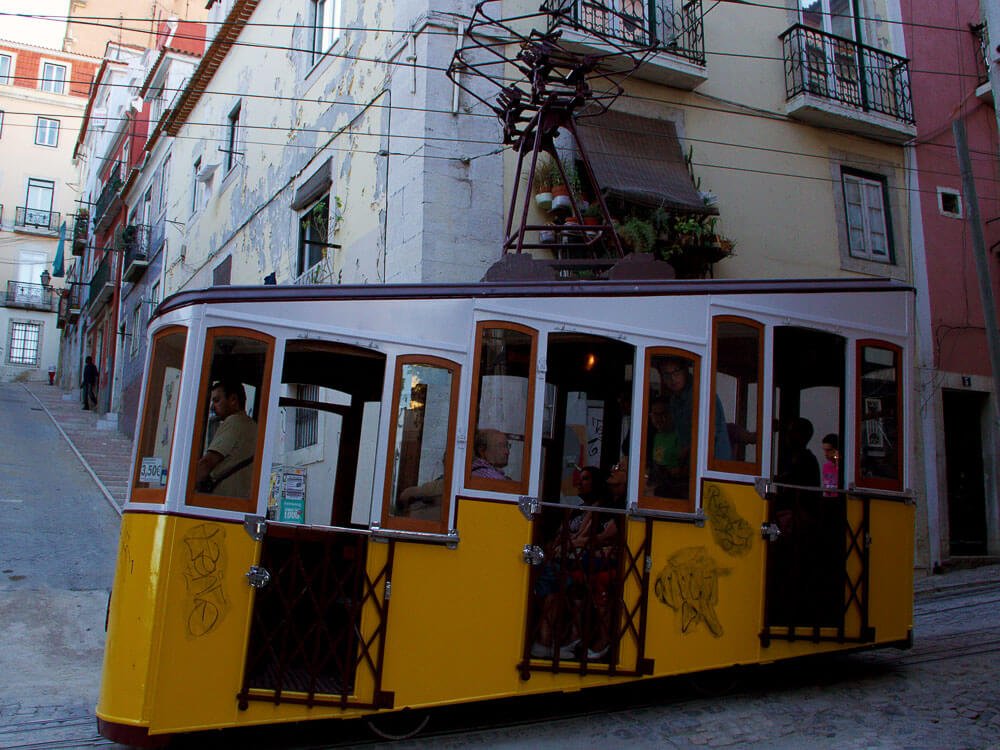
The Elevador da Bica, also known as the Ascensor da Bica, is a crucial transportation link between the Cais do Sodré area and the Bairro Alto district, navigating one of Lisbon’s steep hills.
Since its inauguration in 1892, this funicular has not only facilitated daily commutes but has also become a notable attraction in the city.
Designed by Raoul Mesnier du Ponsard, who also worked on the Elevador de Santa Justa, this traditional yellow tram offers a unique experience as it crosses Rua da Bica de Duarte Belo and reveals captivating views along the way.
It serves as more than just public transport: it’s an essential part of experiencing local culture. For anyone visiting Lisbon, whether for the first time or as a returning tourist, a ride on this funicular provides a fascinating glimpse into both the past and present of the city’s history.

